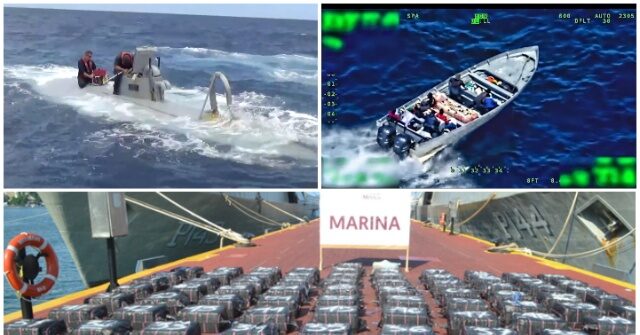CBS News recently reported that the Mexican Navy had seized 3.6 tons of cocaine from what they described as a “narco sub” off the Pacific coast, approximately 153 miles from Acapulco. However, this account has been contested by the Mexican government, which clarified that the drugs were actually retrieved from a twin-engine “Go Fast” vessel. This inconsistency highlights a significant misunderstanding about the types of watercraft utilized by drug traffickers and has raised questions about media accuracy in reporting such incidents.
In their report, CBS News painted a picture of a sophisticated and clandestine operation, suggesting that the vessel in question was a semi-submersible craft designed to evade detection. They characterized the boat as a low-profile “narco sub,” typically used by drug traffickers for stealthy operations. However, the detailed press release from the Mexican government did not support this narrative, as it explicitly described the vessel as a “Go Fast” type rather than a narco submarine. This misclassification detracts from the complexities surrounding narco warfare and vessel capabilities.
According to the official press release from the Mexican Navy, the seizure resulted from careful aerial and maritime surveillance efforts. A Mexican Navy aircraft spotted a Go Fast boat carrying nine crew members engaged in illicit drug transportation. Onboard were 102 large black packages, which upon inspection, contained substances resembling cocaine. The clarity of operations conducted by the Navy underscores their commitment to combat drug trafficking while upholding human rights for those apprehended, including foreign nationals.
The operation’s success, outlined by the Navy, reflects their strategic approach involving various surveillance methods to discourage criminal activities at sea. Upon the interception, the crew and seized goods were transferred onto a Navy ship, emphasizing the official procedures followed in the aftermath, ensuring that judicial processes take their course. The situation also highlights the ongoing challenges faced by law enforcement in effectively addressing drug trafficking networks, especially as these forms of transportation evolve in sophistication.
The distinction between “Go Fast” vessels and narco submarines is critical and deserves clarification. As per Forbes magazine’s definition, Go Fast boats are designed predominantly for speed, aiming to evade capture, while narco submarines leverage stealth with their low profile to evade detection. This fundamental difference indicates that while both types of vessels are employed by drug traffickers, they serve different tactical purposes. CBS’s mischaracterization raises concerns about how important distinctions in narcotic transportation methods are often overlooked or misunderstood in media narratives.
In conclusion, accurate reporting on narcotics seizures and the technology employed by traffickers is essential for public understanding and the effectiveness of counter-narcotics operations. The erroneous labeling of a “Go Fast” vessel as a “narco sub” not only misrepresents the nature of the interception but also risks undermining the ongoing efforts of the Mexican Navy and other law enforcement agencies tackling drug-related crimes. Continuous education and accurate reporting on these issues are pivotal to fostering a well-informed narrative surrounding the intricate world of narco traffic and law enforcement’s ongoing battle against it.

